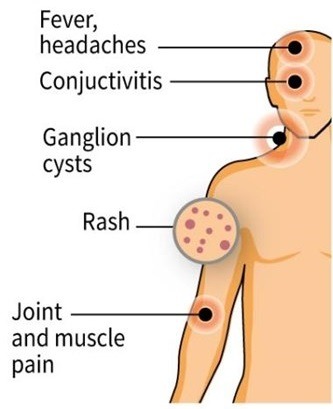What do we really know about the Zika virus (ZIKV)?
Here is some information about ZIKV, you should know, about the mosquito-borne virus.
What is Zika virus?
The Zika virus or ZIKV is a mosquito-borne virus that was first identified in Uganda in 1947 in Rhesus monkeys.
Outbreaks of ZIKV did not occur outside of Africa until 2007, when it’spread to the South Pacific and until 2014 it was unknown to the Americas.
In May 2015, the Ministry of Heath of Brazil confirmed the circulation of Zika Virus (ZIKV) in the country. The infection is spreading rapidly throughout the Americas.
![]()
How is ZIKV transmitted from person to person?
Zika is transmitted by the bite of an Aedes mosquito, the same type of mosquito that carries dengue fever, yellow fever and chikungunya virus.
What are the symptoms of Zika virus?
The disease can cause fever, skin rashes, headaches, muscle and joint pain, and conjunctivit’s, also called pinkeye.
It is uncommon for people infected with Zika to need hospital treatment and most people don’t even know they have Zika virus.
According to the World Health Organisation, one out of four people may develop symptoms, but in those who are affected the disease is usually mild with symptoms that can last between two to seven days.
How is Zika virus treated?
There is no specifc treatment for Zika, people who are sick with ZIKV should get plenty of rest, drink enough fluids and treat pain and fever with common medication.
The disease usually runs its course within a week.
There is currently no vaccination available.
What is the connection between Zika, microcephaly, and pregnancy?
Information is still limited as to whether the ZIKV can be transmitted from transmission from mother to baby during pregnancy. But pregnant women especially those who develop symptoms of Zika virus infection should be closely monitored.
On 28 November 2015, the Ministry of Health of Brazil established a relationship between an increase in cases of microcephaly in newborns and Zika virus infections in the country’s northeast.
According to a preliminary analysis of research carried out by Brazilian authorities, the greatest risk of microcephaly and malformations appears to be associated with infection during the first trimester of pregnancy.
Microcephaly stunts a baby’s head growth, causing it to be much smaller than normal. The baby’s brain often will not grow correctly.

Women in Columbia, Ecuador, El Salvador and Jamaica were recommended by officials to delay pregnancies until more was known about the Zika virus.
US health authorities have also warned pregnant women to avoid travelling to more than 20 countries in Pan-America and beyond, where Zika cases have been registered.
Here is a 2 minute video, from the Wall Street Journal, explaining what the Zika Virus is and how it poses a threat to pregnant women.
For more information about the Zika virus check out the Pan American Health Organisation website.


